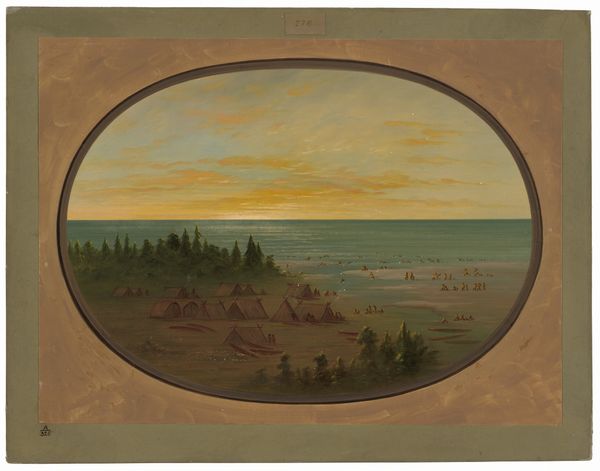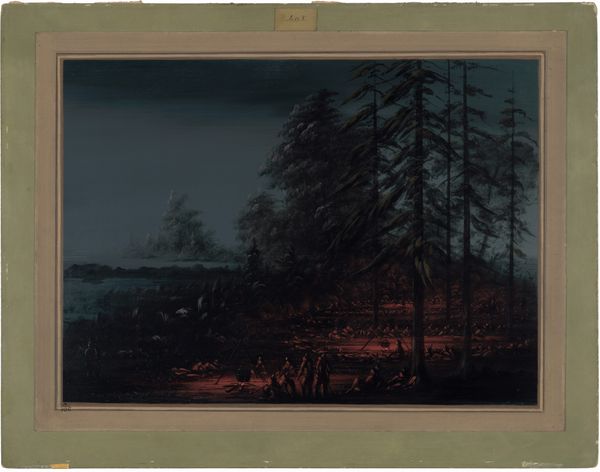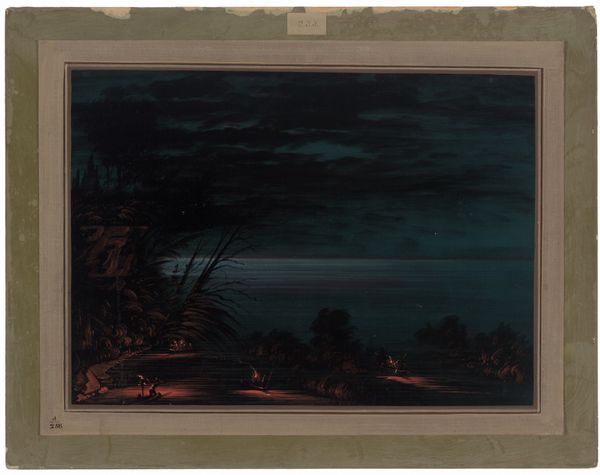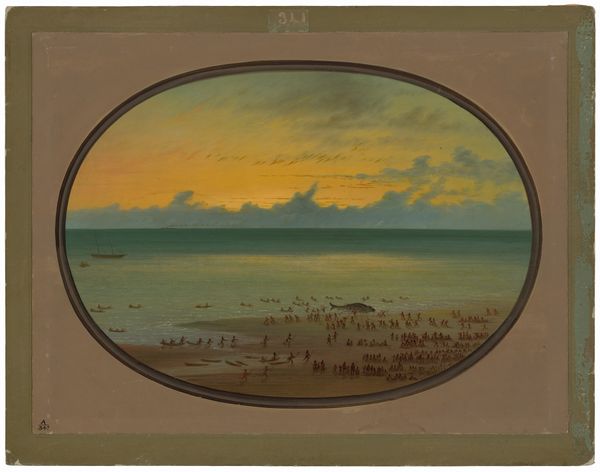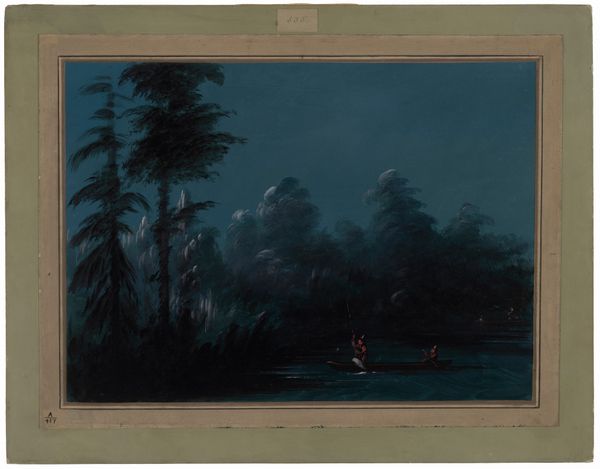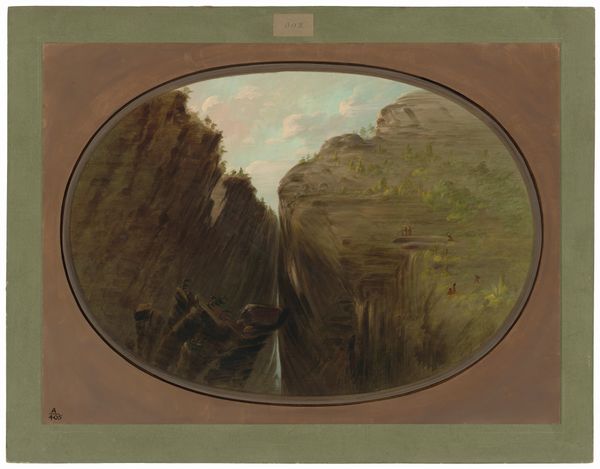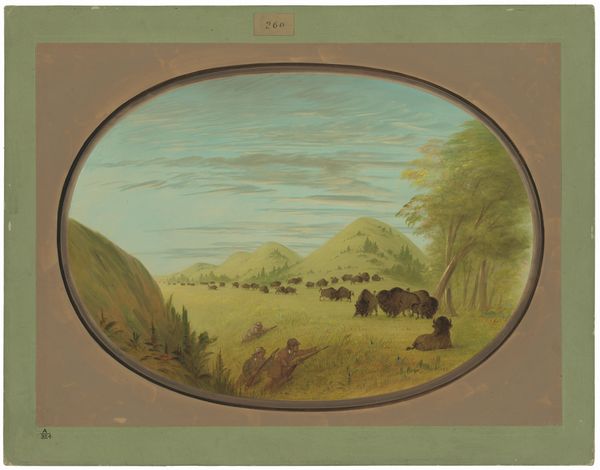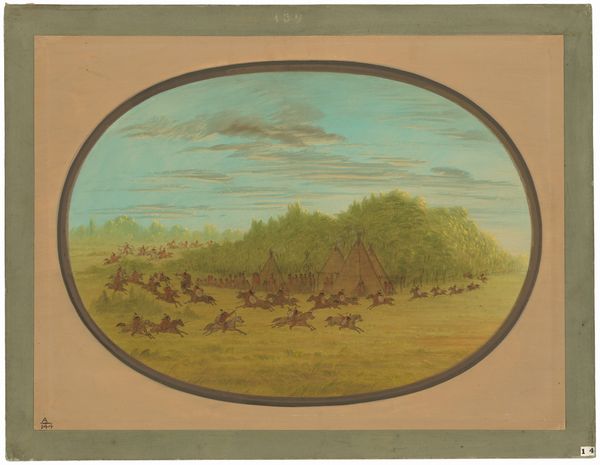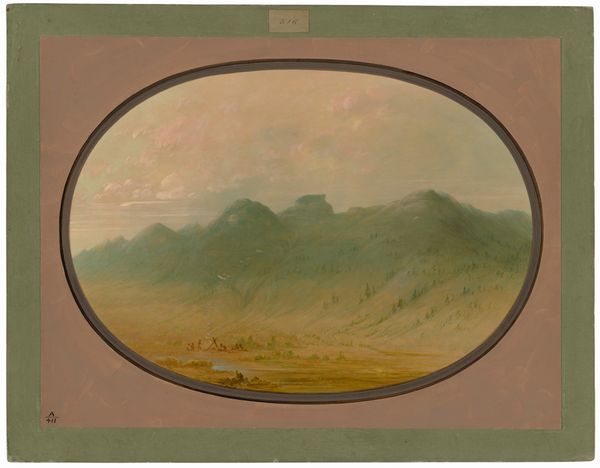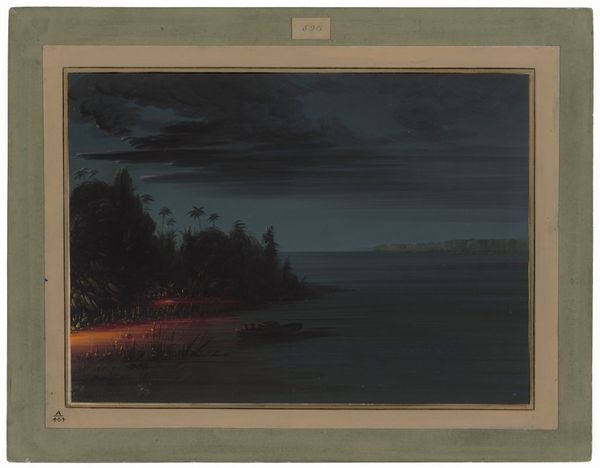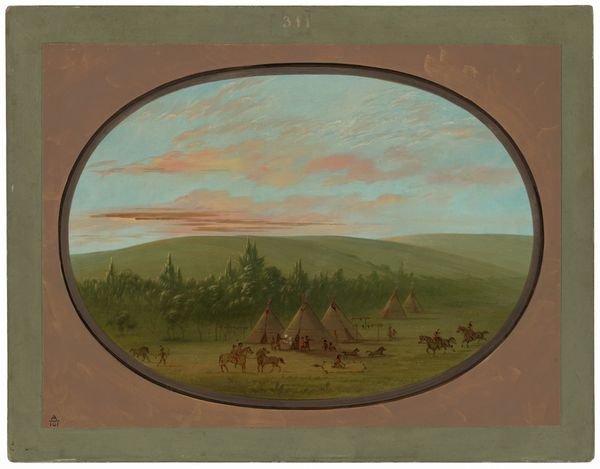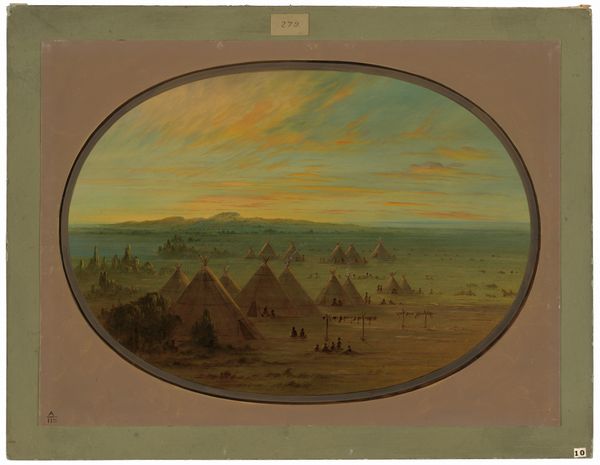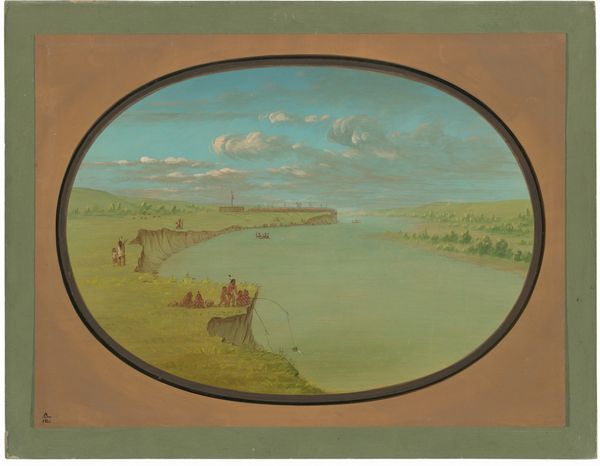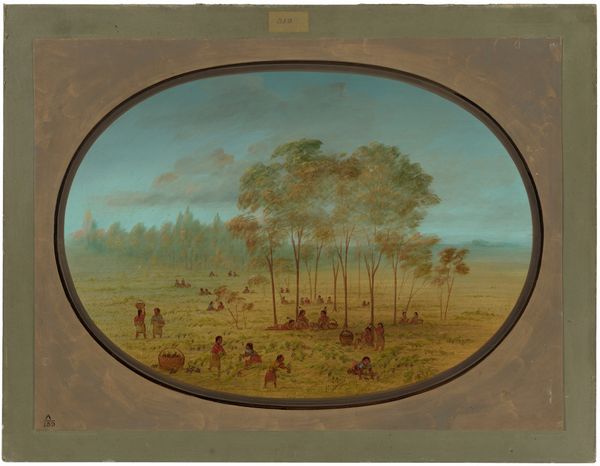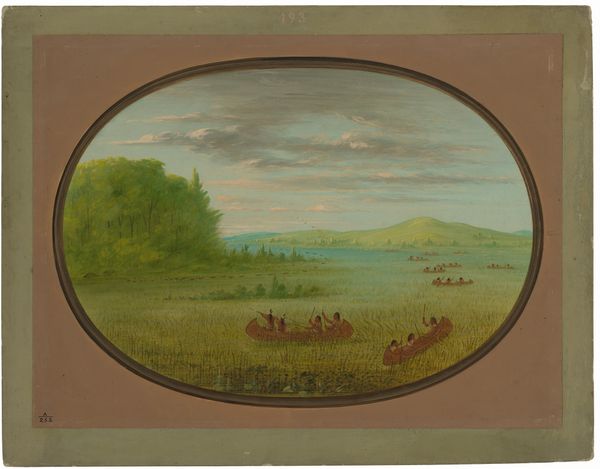
Dimensions: overall: 44.6 x 61.6 cm (17 9/16 x 24 1/4 in.)
Copyright: National Gallery of Art: CC0 1.0
Curator: Let’s discuss George Catlin’s “Nayas Village at Night," dating roughly from 1855 to 1869. It's rendered in watercolor. Editor: What strikes me immediately is the pervasive blue tonality. The almost monochromatic palette casts a serene yet somber mood. The limited color range focuses attention on the luminosity of the water and sky against the dark silhouettes of the landscape. Curator: Yes, and considering Catlin’s work, we must examine his project to document Indigenous peoples, though, obviously, the romanticization of nighttime scenes is typical of that era. Look how he presents an apparently peaceful scene with those gathered around a fire on a rocky cliff. Yet his romantic views have often obscured the complexities of intercultural exchange. Editor: I agree; however, I see formal mastery. Notice the artist’s play with light. The reflection on the water surface mirrors the diffuse light breaking through the cloud cover. The high horizon line compresses the picture vertically, making the campfire a crucial compositional element as it creates depth and warmth, setting off the whole painting. Curator: And that careful placement surely reflects the need for these images to play a role in shaping opinions. We must reckon with Catlin's portrayals and consider what was left unseen or unsaid regarding Native American lifeways. The village remains in shadow—literally. We, the presumed Western audience, are in the dark about their experiences. Editor: Shadow enhances the overall sense of mystery. The oval frame helps accentuate the internal composition and draws one’s eye further into this nighttime landscape. Even beyond context, this remains a lesson in color and balance. Curator: Perhaps, but without addressing that complicated and painful context, we risk upholding a version of history that celebrates colonialism, erasing voices that are so desperately needed. But indeed, considering the use of color and the artistic choices, it's a work that compels further inspection. Editor: Agreed. Seeing those subtle shifts in tonality encourages a deeper look into the form and overall atmosphere the artist has masterfully created here.
Comments
No comments
Be the first to comment and join the conversation on the ultimate creative platform.
